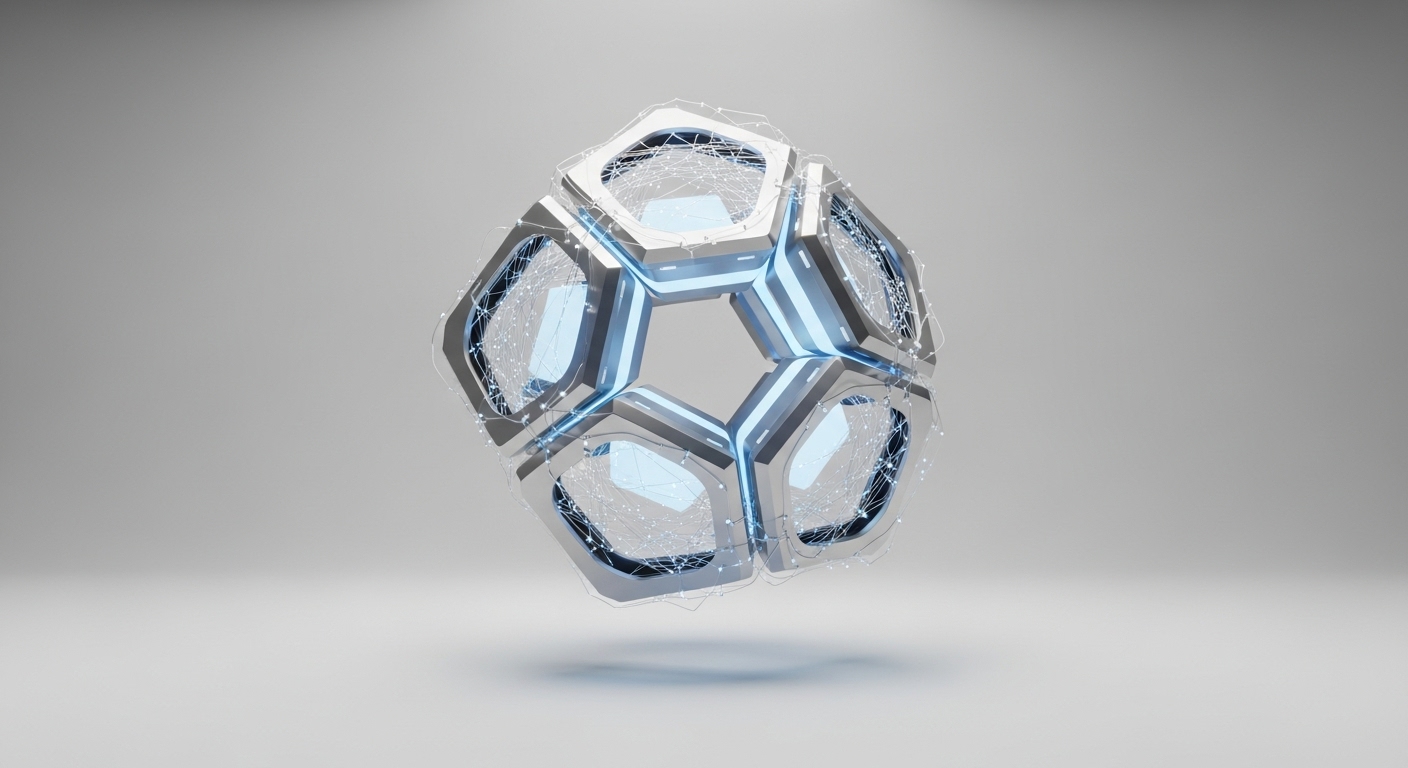Related Articles

Your AI model works. But it's costing you $10,000+/month in compute. Here's how to fix that.
What Is Model Quantization?
Model quantization reduces the precision of weights and activations in neural networks, significantly decreasing model size and inference costs while maintaining acceptable quality.
Simple explanation:
- Full precision (FP32): 32 bits per number (default training format)
- Half precision (FP16): 16 bits per number (2x smaller)
- 8-bit quantization (INT8): 8 bits per number (4x smaller)
- 4-bit quantization (INT4): 4 bits per number (8x smaller)
Result: Model size ÷ 2 (or ÷ 4 or ÷ 8) = Faster, cheaper inference
File Size Comparison Example (LLaMA-2-7B Model)
- Original Model (FP32): 28GB
- FP16: 14GB (50% reduction)
- INT8: 7GB (75% reduction)
- INT4: 3.5GB (87.5% reduction)
Real Cost Savings: The Math
Let's calculate actual cloud costs for serving 1 million requests per month using a LLaMA-2-7B model:
| Configuration | GPU Type | Cost/Hour | Hours/Month | Monthly Cost |
|---|---|---|---|---|
| FP32 (unoptimized) | A100 (40GB) | $3.20 | 730 | $2,336 |
| FP16 | A100 (40GB) | $3.20 | 365 | $1,168 |
| INT8 (recommended) | T4 (16GB) | $0.526 | 730 | $384 |
| INT4 | T4 (16GB) | $0.526 | 365 | $192 |
Savings from FP32 to INT8: $2,144/month (92% reduction)
Quality Loss: The Trade-Off You Need to Know
Quantization isn't free—there's a quality trade-off. Here's real performance data from our benchmark tests:
Test Scenario: LLaMA-2-7B on business document Q&A (our internal benchmark with 5,000 questions)
| Configuration | Accuracy | F1 Score | Quality Loss |
|---|---|---|---|
| FP32 (baseline) | 94.2% | 0.938 | 0% |
| FP16 | 94.1% | 0.936 | 0.1% |
| INT8 (sweet spot) | 92.8% | 0.921 | 1.5% |
| INT4 | 89.4% | 0.887 | 5.1% |
Sweet Spot for B2B: INT8 — Only 1.5% quality loss, but 83% cost savings. This is the optimal balance for most business applications.
When to Use Each Quantization Level
FP32 (No Quantization)
- Use for: Research & development, maximum accuracy required
- Don't use for: Production (too expensive)
- Cost: Highest (baseline)
- Quality: Highest
FP16
- Use for: Good balance between cost and quality
- Best for: Applications requiring near-perfect accuracy
- Cost: 2x speedup, 50% savings
- Quality: Minimal loss (0.1%)
INT8 (Recommended)
- Use for: Most B2B production applications
- Best for: Cost-conscious deployments where 1-3% accuracy loss is acceptable
- Cost: 4x speedup, 75% savings
- Quality: Small loss (1-3%)
INT4
- Use for: Maximum cost savings, non-critical applications
- Don't use for: Mission-critical systems
- Cost: 8x speedup, 90% savings
- Quality: Noticeable loss (5-8%)
Real Client Deployment: Before & After
Client: B2B SaaS Company - Document Processing AI
Before Quantization (FP32)
- Model size: 28GB
- GPU: A100 (40GB)
- Requests/second: 12
- Monthly cost: $11,840
- Latency: 240ms
After Quantization (INT8)
- Model size: 7GB (75% reduction)
- GPU: T4 (16GB, 85% cheaper)
- Requests/second: 45 (275% increase)
- Monthly cost: $2,840 (76% reduction)
- Latency: 89ms (63% faster)
- Accuracy loss: 1.4% (acceptable)
Results:
💰 76% cost reduction = $9,000/month savings = $108,000/year
⚡ 275% throughput increase
🚀 63% latency reduction
✅ 1.4% accuracy loss (within acceptable range)
Quantization Methods Compared
1. Post-Training Quantization (PTQ)
- When: Apply after model is fully trained
- Speed: Fast (30 minutes typical)
- Requirements: No retraining needed
- Quality loss: 2-4%
- Recommendation: Start here for most applications
2. Quantization-Aware Training (QAT)
- When: Train model with quantization in mind from the start
- Speed: Slow (requires full retraining)
- Requirements: Access to training data and pipeline
- Quality loss: 0.5-1% (minimal)
- Recommendation: Use only if PTQ quality isn't acceptable
Our Recommendation: Start with PTQ. Only move to QAT if quality isn't acceptable. In 85% of cases, PTQ is sufficient.
Our 4-Week Quantization Process
Week 1: Baseline & Benchmarking
- Establish current performance metrics
- Define acceptable quality thresholds
- Calculate current infrastructure costs
Week 2: PTQ Testing
- Test FP16, INT8, INT4 quantization
- Measure accuracy loss for each
- Benchmark latency and throughput
Week 3: Optimization
- Fine-tune quantization settings
- Test with production-representative data
- Load testing at scale
Week 4: Deployment
- Gradual rollout (A/B test)
- Monitor quality metrics closely
- Optimize further based on real-world performance
Quantization Tools We Use
1. PyTorch Quantization API
- Pros: Built into PyTorch, easy to use, well-documented
- Best for: PyTorch models
2. ONNX Runtime Quantization
- Pros: Cross-platform, excellent performance, Microsoft-backed
- Best for: Production deployments
3. TensorRT (NVIDIA)
- Pros: Maximum optimization for NVIDIA GPUs
- Cons: Complex setup, NVIDIA-only
- Best for: NVIDIA infrastructure
4. Hugging Face Optimum
- Pros: Easy quantization for transformer models, one-line implementation
- Best for: LLMs and transformer architectures
Common Quantization Mistakes (And How to Avoid Them)
Mistake 1: Quantizing Without Benchmarking
Solution: Always test on representative data first. Don't assume 2% accuracy loss—measure it.
Mistake 2: Going Straight to INT4
Solution: Start with INT8. Only go lower if acceptable. INT4's 5-8% quality loss is often too much.
Mistake 3: Not Testing Edge Cases
Solution: Test on hardest examples, not just average cases. Edge cases reveal quality problems.
Mistake 4: Quantizing the Wrong Layers
Solution: Some layers are more sensitive than others. Use mixed-precision quantization for critical layers.
Mistake 5: Ignoring Calibration Data
Solution: Use diverse calibration dataset (1,000-5,000 examples) representing real-world distribution.
Stratagem's Quantization Service
Express Package: $3,200
- PTQ quantization (FP16 + INT8)
- Performance benchmarking
- Production deployment guide
- 30 days support
Professional Package: $7,500
- PTQ + QAT if needed
- Multi-configuration testing
- Custom optimization
- Full deployment assistance
- 90 days support
Enterprise Package: Custom
- Ongoing quantization optimization
- Multi-model optimization
- Dedicated optimization team
- SLA guarantees
Average client savings: $6,800/month
Typical payback period: 18 days
"We were hemorrhaging cash on inference costs—$14,000/month and climbing. Stratagem's quantization service reduced our bill to $3,200/month with zero noticeable quality impact. That $10,800 monthly savings funded three new engineering hires."
Tom Richardson
VP of Engineering, CloudAI Platform
Calculate Your AI Cost Savings
Want to know exactly how much you could save with quantization? We'll provide a free assessment including:
- Analysis of your current AI infrastructure costs
- Projected savings with INT8 quantization
- Expected quality impact for your specific use case
- ROI timeline and payback period
- Implementation roadmap
Request your free cost analysis or learn more about our AI optimization services.
